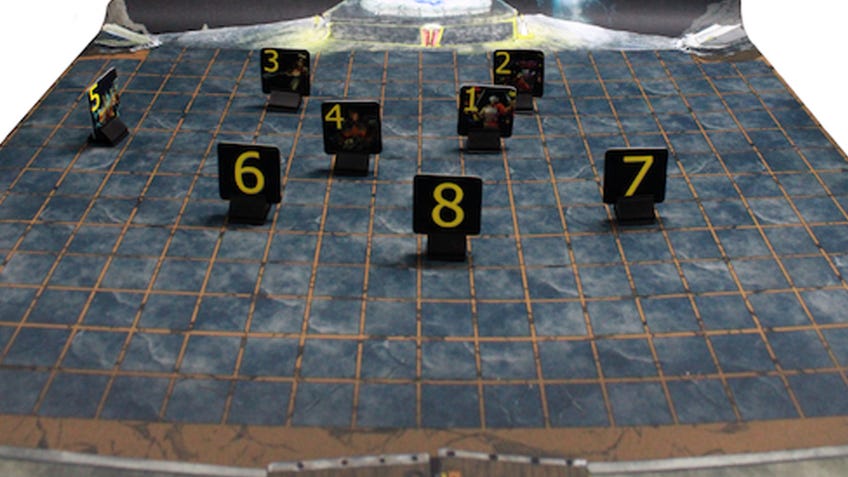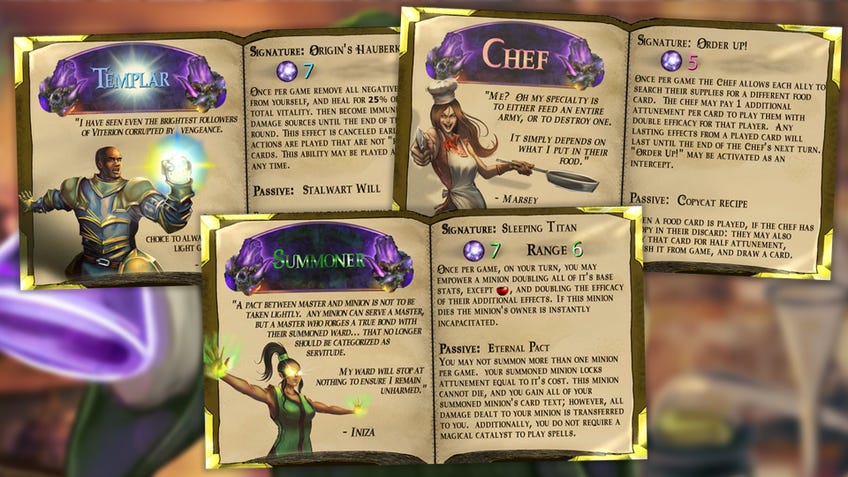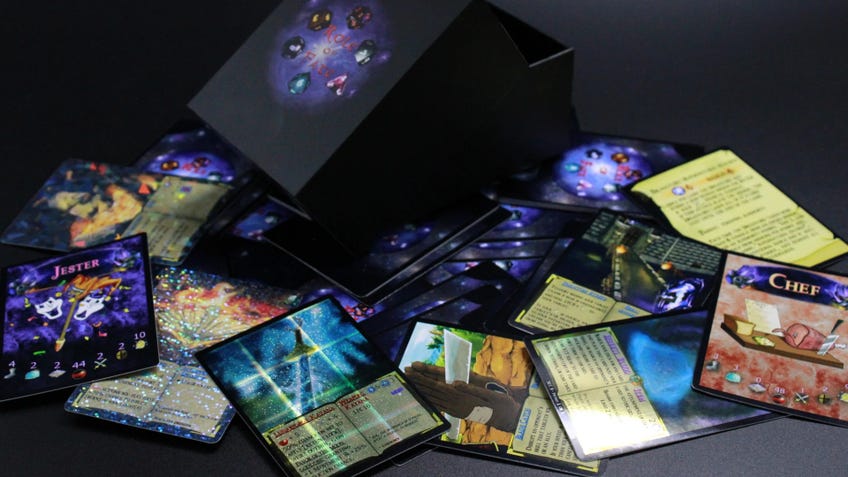SPONSORED: Role of Fate blends Magic: The Gathering and D&D influences together in a TCG-RPG hybrid
With a community-driven narrative.
This article is sponsored by Role of Fate. Find out more and back Role of Fate until September 5th on Kickstarter.
New game Role of Fate looks to meld together the fast-paced cardplay of trading card games and the tactical combat of roleplaying games in a single community-centric experience.
Role of Fate’s co-operative experience sees players join forces to defeat enemies by using the cards from their hand. Those cards are determined by each player’s unique role - the game’s equivalent to a class in D&D - with decks able to be customised for specific play styles and strategies, much like a trading card game such as Magic: The Gathering.
Players can equip their character with weapons, armour, accessories and erudition cards, enabling them to use abilities and cast spells during combat. Attacks and other ‘fate checks’ are resolved using rolls of specific polyhedral dice, such as d8 or d20, similar to an RPG. Those rolls are modified by each character’s statistics, including physical and magical attack strength and physical and magical defence.
Weapons, spells and skills all grant various bonuses and abilities, with additional curses and blessings being harder to cast but resulting in permanent effects. Reaction cards allow players to disrupt and counterattack in response to enemies’ actions, with the ability to cover an ally or interrupt an enemy’s action entirely.
While the combat is driven by cards, players’ characters are represented by figures on a gridded map board. Those figures are moved around to gain positional advantages against monsters - by flanking them, attacking from the rear or using attacks of specific ranges - much like a combat encounter in a tabletop RPG or miniatures game. Each character’s speed influences their place in the order order - akin to initiative in an RPG - while a separate movement stat determines how many squares they can move.

The game includes a dozen playable roles - Alchemist, Cleric, Druid, Magister, Phalanx, Sentinel, Summoner, Templar, Trickster, Vigilante, Virtuoso and Warlord - in addition to four promo roles that will be offered during the game’s initial run to March 2024 and at limited times in the future: Dreadlord, Chef, Jester and Duelist.
All of the playable roles will be able to use any cards, with the universal playability of cards a key aspect of Role of Fate’s gameplay. The cards will be able to be used via equipment or set bonuses, or passive effects innate to each class.
Creator Zane Morris came up with the idea for Role of Fate several years ago while awaiting the birth of his daughter, inspired to design a game that the two could eventually play together.

The game’s communal approach to gameplay and narrative is said to have been inspired by Morris’ love of tabletop games such as Dungeons & Dragons and Magic: The Gathering, but also multiplayer video games including EverQuest and World of Warcraft.
That community element - which Morris built into the heart of the game after feeling concerned about the loss of social interaction between players as the result of mobile games and the alienation of single-player experiences - will see the game’s lore and official events influenced by players’ collective actions. Players’ actions will help direct Role of Fate’s lore and the response of its DM-like in-game figure The Weaver - controlled by Morris - throughout the game’s official campaign and ‘player-vs-creator’ events. Those same PvC events will allow players to delve deeper into the Everrealm by discovering clues to its mysteries.
Adding to the game's deeper lore and meta narrative are a number of Easter eggs and other clues hidden across both the game's cards and its surrounding website and merchandise. Morris will encourage the community to share clues in order to discover these secretive details and information, making use of riddles, invisible ink and other inventive methods.
Role of Fate will also feature an in-game currency called Fabrinium, which can only be acquired by participating in tournaments, the official campaign, via milestone events and through other in-game and community events. Unlike the in-game currency of a video game, Fabrinium can’t be purchased with real money, instead serving as a way of rewarding players for engaging with the game’s community aspects, making it more akin to reward points. Fabrinium will be able to be traded between players, as tracked via the game’s Discord channel, tabletop platform Carde.io and a companion app, and be exchanged for entry to events, buying limited-time items via Role of Fate’s website or between individual players for cards.
Role of Fate’s Kickstarter campaign is live now and will run until September 5th, offering a starter box including 60 cards, a battleground mat, dice, unit pieces and a role card. Also on offer will be card ‘caches’ - booster pack-like sets containing varying amounts of random cards - as well as role-themed decks containing a specific role card and 35 random cards. Following this summer’s crowdfunding campaign, Role of Fate is planned for release this December.


